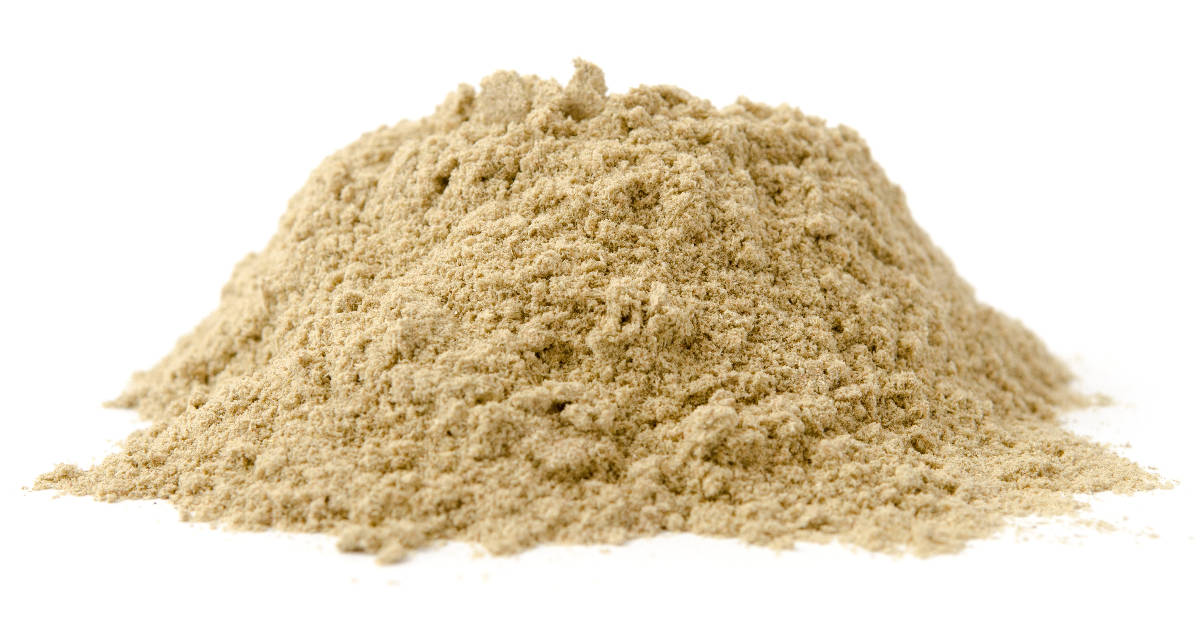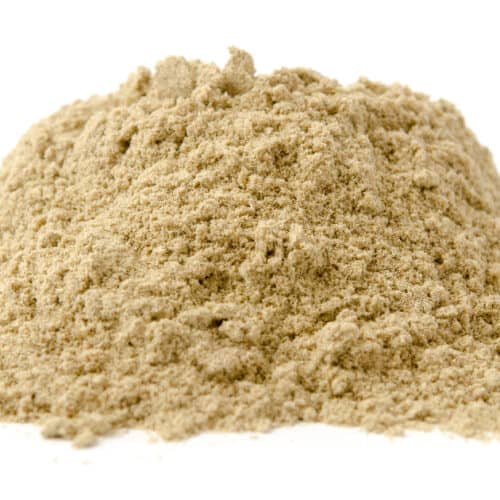Lemongrass powder is made from dried and ground lemongrass, imparting a delightful citrusy aroma and flavor.

This versatile spice plays a central role in various Asian cuisines, lending its bright lemon notes to curries, soups, marinades, stir fries and more.
Making your own lemongrass powder at home is simple. With just a few basic ingredients and easy steps, you’ll have a handy spice to enliven your cooking.
Benefits of Making Your Own Lemongrass Powder
Before we dive into the easy method for making DIY lemongrass powder at home, let’s look at why it’s worth the small effort:
- Cost savings: Making it yourself is cheaper than buying ready-made powder.
- Control ingredients: You control quality and freshness of the ingredients.
- Customize to taste: Adjust to your preferred intensity of lemon flavor.
- Use up scraps: Utilize lemongrass ends and pieces that would otherwise be discarded.
- Experiment with flavors: Get creative with added spices and herbs.
- Longer shelf life: Powder keeps longer than fresh lemongrass.
On top of all that, there’s just something immensely satisfying about making and using your own homemade spice mix!
Tips for Selecting Lemongrass
Starting with quality fresh lemongrass is key for flavorful DIY lemongrass powder. Here are some tips for picking the best stalks:
- Look for: Smooth, shiny green skin without any dried out or brown portions
- Give it a sniff: Fresh lemongrass has a pronounced lemon aroma when the bulbs at the stems are pinched
- Feel the firmness: Stalks should feel rigid and snappy, not bendy, limp or mushy
- Use the lower stems: The bottom 5-6 inches closest to the bulb have the highest concentration of flavorful oils
- Buy extra: You’ll need about 3/4 pound fresh lemongrass for one batch of powder
Once you’ve selected quality lemongrass stalks, you’re ready to get prepping!
Key Takeaway: Choose fresh, firm lemongrass stalks with smooth skin and a noticeable lemon scent. The lower 5-6 inches of the stem tend to be the most flavorful.
Preparing the Lemongrass
Preparing fresh lemongrass for powder is a quick and straightforward process. Just rinse, trim, peel and chop the stalks into small pieces before dehydrating.
Here are step-by-step instructions:
What You Need
- 3/4 pound fresh lemongrass stalks
- Sharp knife
- Cutting board
- Mixing bowls
- Dehydrator (or oven/air dry method)
Steps
1. Rinse the stalks under cool running water and pat dry thoroughly with paper towels or a clean kitchen towel. Make sure the stalks are completely dry before proceeding.
2. Trim both ends of each stalk. Cut off and discard any dried out or woody upper portions, keeping just the smooth lower 5-6 inches which has the highest oil content.
3. Peel away any tough outer layers using your fingertips. The softer inner core is what you want for powder.
4. Slice the stalks crosswise into thin rounds, similar to cutting garlic cloves or ginger coins. Aim for roughly 1/8-inch thickness.
5. Chop finely into smaller pieces for quick, even drying.
6. Spread out in a single layer on dehydrator trays or baking sheets.
You now have prepped lemongrass ready for the important drying step to transform the fresh herb into fragrant powder!
Dehydrating the Lemongrass
Removing the moisture from the prepped lemongrass pieces is vital for grinding it into shelf-stable powder.
You have three options for effectively drying lemongrass at home:
- Use a dehydrator: This is the quickest and most convenient method, typically taking 8-12 hours at 95°F - 115°F.
- Oven-dry: Arrange lemongrass pieces in a single layer on baking trays. Bake at the lowest oven temperature, ideally between 95°F - 115°F. Prop the oven door open slightly to allow moisture to escape. Time ranges from 12-24 hours.
- Air dry: Spread out lemongrass on trays or mesh racks. Place near a sunny window or under a fan indoors, turning pieces occasionally. Drying time averages 1-2 weeks.
| Method | Time | Tips |
|---|---|---|
| Dehydrator | 8-12 hours | Fastest method. Use 95°F - 115°F setting |
| Oven | 12-24 hours | Prop door open slightly. Keep temp between 95°F - 115°F |
| Air dry | 1-2 weeks | Place near sunny window or under fan |
No matter which technique you use, the lemongrass is ready when completely dried and brittle. Now you’re finally ready to grind it into fresh, aromatic powder!
Grinding the Dehydrated Lemongrass
Transforming the dried lemongrass pieces into fine powder takes just minutes. You’ll need:
- Dried lemongrass pieces
- Electric spice grinder, coffee grinder or mini food processor
Working in small batches, pulse the lemongrass until reduced to a fine powder, taking care not to overprocess. Avoid a coarse, chunky texture.
Sift and discard any remaining fibrous bits. Combine all powder batches and store in an airtight container away from light, heat and moisture.
And that’s it - you now have fresh homemade lemongrass powder to add bold, citrusy flavor to your cooking for months to come!
Lemongrass Powder Recipe Variations
Basic lemongrass powder made from just the herb itself is endlessly useful in the kitchen. But you can also experiment with fun flavor variations:
Lemongrass-Ginger Powder: Dehydrate and grind equal parts fresh lemongrass and ginger root. Fantastic in marinades and stir fries.
Lemongrass-Galangal Powder: Mix dried, ground lemongrass with equal parts galangal powder, available at Asian grocers. Adds intense lemon-pine notes to Thai curries.
Lemongrass-Kaffir Lime Powder: Grind together dried lemongrass and kaffir lime leaves. Brightens up soups and tom yum.
Lemongrass-Chili Powder: For spicy kick, add any dried red chili flakes or powders, like Korean gochugaru. Use in spiced salt rubs or rim margarita glasses.
Feel free to get creative with your own signature blends!
How to Store Lemongrass Powder
Properly stored, homemade lemongrass powder will retain maximum aroma and flavor for up to 6 months. Follow these storage tips:
- Store in airtight glass jars or containers away from light, heat and moisture
- Avoid plastic bags or containers which can impart odors
- Use clean, dry utensils to scoop out powder
- Do not return unused powder to the container after touching hands or food
- Open container minimally to prevent moisture exposure
- Ideal storage temperature is 60°F - 68°F
With proper storage methods, you’ll be able to enjoy your homemade powder for many months!
Key Takeaway: Keep lemongrass powder in airtight glass jars stored away from light, heat and moisture. Open minimally and use clean utensils to scoop out only what you need.
Getting the Most Out of Your Lemongrass
A little lemongrass goes a long way, so here are some clever ways to use up every last bit of your precious homemade powder:
- Rub on meat, seafood or tofu before grilling or sautéing
- Make a zingy lemongrass salt by blending powder with coarse salt
- Whisk into dressings, dips and marinades
- Sprinkle on steamed veggies or rice
- Combine with sugar or salt for a rim on margaritas or other cocktails
- Stir into smoothies, lemonades or ice teas
- Mix into cookie, cake or scone batters and doughs
Think beyond main dishes, too. Lemongrass powder shines in unexpected places like mixed into pancake batter; folded into ice cream bases; or dusted over fresh fruit or frosty drinks for a lively garnish.
However you put your lemongrass powder to use, a little truly goes a long way thanks to its intense citrusy essence.

Homemade Lemongrass Powder Recipe
Ingredients
- 3/4 pound fresh lemongrass stalks
Instructions
- Rinse lemongrass stalks under cool water and pat very dry with towels.
- Trim both ends of stalks. Cut off and discard any dried out or woody upper portions, keeping just the smooth lower 5-6 inches.
- Peel away any outer tough layers with your fingertips until reaching the softer inner core.
- Slice stalks crosswise into thin rounds about 1/8-inch thick.
- Chop sliced lemongrass very fine into smaller pieces.
- Spread pieces in a single layer on dehydrator trays or baking sheets. Dehydrate at 95°F - 115°F, until completely dried and brittle. Time ranges from 8-24 hours depending on method.
- Working in small batches, grind dried lemongrass into a fine powder using an electric spice grinder or food processor. Avoid over-processing.
- Sift out any fibrous pieces. Combine powder batches and store in an airtight container in a cool, dark place for up to 6 months.
Notes
- For flavor variations, grind dried lemongrass with spices like ginger, chili powder, galangal, or kaffir lime leaves.
- To extend shelf life, freeze lemongrass powder for 6-12 months.
FAQs
What’s the shelf life of homemade lemongrass powder?
Properly stored in a cool, dark place in an airtight glass jar, lemongrass powder will retain optimum quality for about 6 months.
Can lemongrass powder be frozen?
Yes! To extend shelf life, you can freeze lemongrass powder in an airtight container for 6-12 months. Allow to come fully to room temperature before opening powder container to prevent moisture condensation.
Is lemongrass powder gluten-free?
Pure lemongrass powder without any additives is naturally gluten-free and suitable for gluten-free diets, provided care is taken to avoid cross-contamination with gluten-containing products during storage, handling and serving.
Can you use lemongrass powder to make tea?
Definitely! Lemongrass powder makes a refreshing citrusy tea on its own or blended with green or black tea. Simply stir about 1/2 to 1 teaspoon powder into hot water and steep 3-5 minutes. Sweeten if desired.
What’s the difference between lemongrass powder and lemon powder?
Lemongrass powder is made from the dried herb lemongrass, imparting the tropical grass’ distinctive lemon/citrus flavor. Lemon powder is made from dehydrated lemon juice or zest, providing just tart, lemon notes.
Conclusion
Whipping up your own batch of lemongrass powder is simple with fresh lemongrass stalks, a little time and some basic equipment for drying and grinding. Making your own allows you to control quality and customize flavor to your taste and intended uses.
Experiment with flavor variations like spicy or herbal blends. And explore creative ways to utilize this dynamo spice beyond standard stir fry or curry recipes. A pinch of your homemade powder makes an awesome finishing touch to lift everyday dishes into something special.

